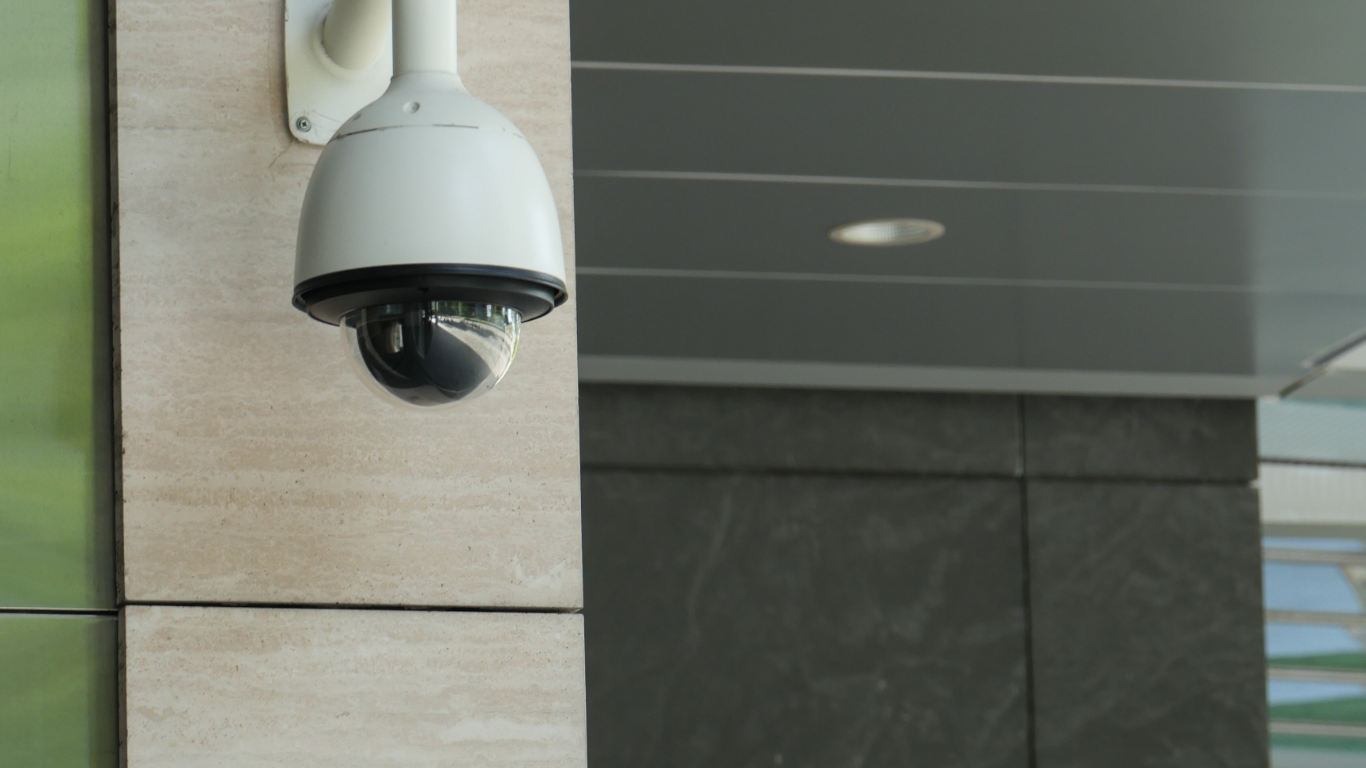
- Date: 22/11/2022
- Time: 06:28 AM
Choosing the Right Security Cameras for your Business
Turret. PTZ. Varifocal. Thermal. There are a dizzying number of options and upgrades to consider when choosing which security cameras are best for you. Whether you’re a school, multifamily unit or medical facility, each business has different needs. To help you gain a better understanding of the market, we wanted to offer a quick rundown of some of the key features and options that are available to you. Keep in mind that most all of the camera options below can be made available in either exterior weatherproof housing or less expensive interior housing. Let’s get started!
1) Camera Movement
Your first decision is on movement: do you want your cameras fixed on predetermined areas or would you like the ability to move your camera around? Here are the main options:
- Fixed Lens – With fixed lens, your camera stays in the same position—no focusing, no zooming, or no changing angles. The main benefit here is cost, as fixed lens cameras are inexpensive and easy to operate. And with less moving parts, they are incredibly reliable.
- Manual Varifocal – While the camera position remains fixed, with manual varifocal cameras you are able manually adjust the focal length. Why would you need this? Capturing license plate numbers on vehicles leaving your parking lot is a good example. The main disadvantage is that you must decide the focal length at instillation, as changing focus requires removing the lens inside the camera. Which brings us to…
- Motorized Varifocal – Wide angle or zoomed in tight, motorized varifocal cameras allow you to adjust focal length in real time via your computer or phone. Naturally, these cameras are more expensive than manual varifocals, but still less expensive than the next one up on our list.
- PTZ – With Pan-Tilt-Zoom security cameras, the camera actually swivels, tilts and moves wherever you want it to go. Controlled either manually via a remote operator or by using software that can track movement, these top-of-the-line cameras are designed to cover very large areas such as parking lots or farms. The main disadvantage is a high price-tag.
2) Camera Shapes & Sizes
Security cameras come in a range of shapes and sizes. Let’s focus on the three most popular.
- Bullet – The most common type of security camera, bullet shaped cameras are overt security deterrents that are meant to be seen by would-be thieves. But while bullet cameras can be repositioned in different directions, thieves would still be able to see exactly where they are pointed, allowing for the possibility of slipping under surveillance.
- Dome – Dome security cameras are easily recognizable for their circular dome encasing. The black dome on the outside disguises which way the camera inside is pointing, making it an ideal deterrent for large spaces and areas. Coming in both fixed and motorized varieties, dome cameras provide immaculate coverage for nearly every use.
- Turret – Also known as eyeball cameras, turret security cameras feature a ball and socket design that allows small cameras inside to actually pivot in almost any direction the user decides. Their flexibility, great image quality and compact design make them a popular choice for customers looking to cover a wide variety of angles.
3) A Few Add-ons & Extras
Security cameras can come equipped with all sorts of innovative features and technology. Below are a few of the most popular.
- Thermal – Detecting only heat from people or objects, thermal camerascan be used for low light situations like wooded areas or dark corridors. Thermal cameras have also been popular during the COVID pandemic since they are able to single out elevated body temperatures.
- WDR – Wide Dynamic Range cameras are made for areas that feature both light and dark spots. In lighter areas, a higher speed is used so the sensor is exposed to light for less time, while in darker areas a slower shutter speed causes the sensor to capture more light. Both images are then combined to obtain a final image with intermediate lighting.
- Low-light – Relying on infrared sensors that can function without any light at all, these specialized cameras are able to make out shapes, faces and numbers in complete darkness. One key disadvantage is that the footage is in black and white.
- 4K – Recording at stunning 3840 x 2160 resolution, these high-end cameras can deliver four times the video clarity as traditional 1920 x 1080 resolution. While 4K cameras are expensive and require a great deal of bandwidth, they will undoubtably give you the best image quality on the market.
- LPR – License Plate Recognition is a security camera feature designed solely for the purpose of capturing clear, legible images of license plates, which can then be added into a database for easy searching.
These are just a few of the many great options that are available to you when choosing security cameras for your business. Each camera has its own unique advantages and disadvantages, so when you’re ready to get more in depth, contact us to set up a free consultation and talk about your needs. After our custom design and installation, we offer free comprehensive training on all security camera usage and software. All you need to do is give us a call!
About us: For more than three decades, clients have turned to Colwill Engineering® for the best people in the business at the best value. Originally founded as an electrical engineering firm, our team quickly garnered a reputation for professionalism, expertise and quality. We staff only the brightest minds in the business and our team works synergistically to ensure every design is cost-effective and fully executable. If we design it, trust that we can build it within budget.
